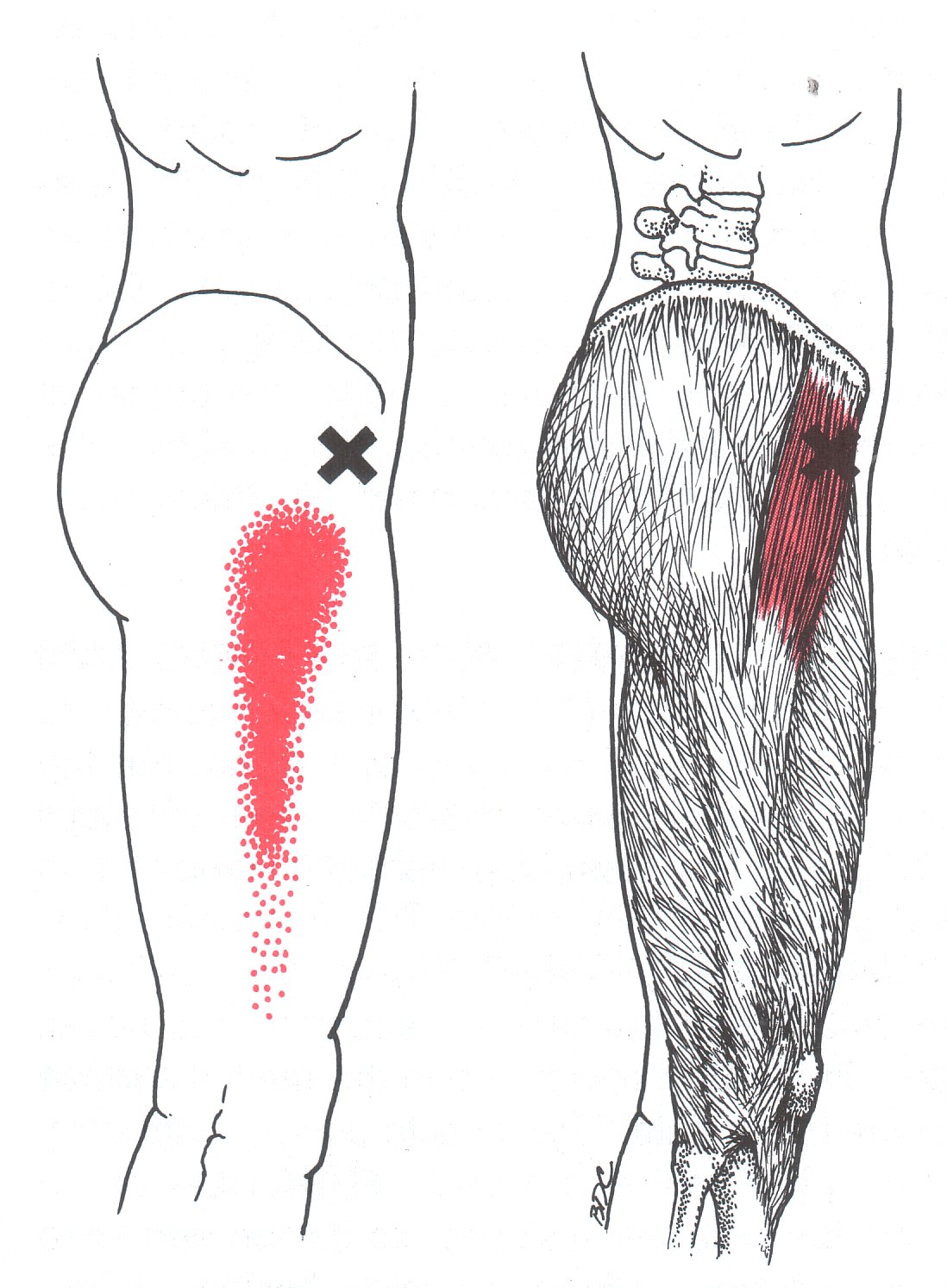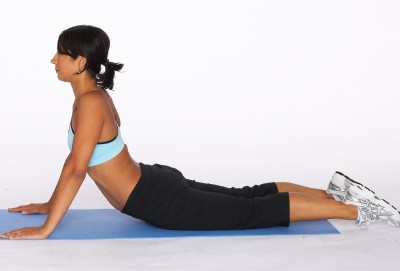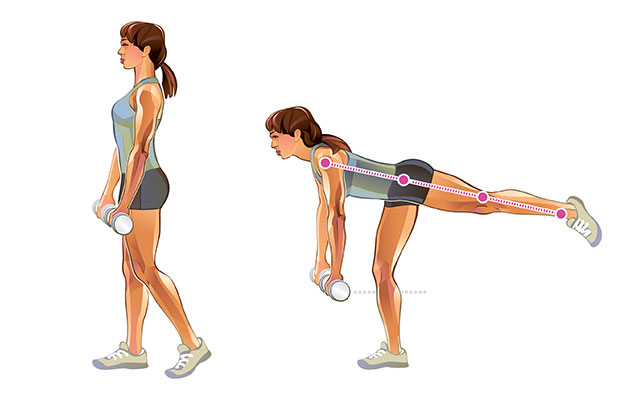
Do you suffer from knee pain? back pain? neck pain? hip pain? ankle sprains or pain? Do you want to walk up the stairs easier, carry your grandchildren, play golf or tennis with your friends, jump higher, move faster? The gluteal region is important for everything but we sit on it all day long. Technology and society makes it too convienent to not engage our rear, hence the “butt amnesia”. Children are made to sit in chairs that help us develop poor posture at an age. Do not get me started on smart phones.
Let’s breakdown why the Gluteus Maximus (GM) is one of the most important muscle to train. There are two parts to the GM, upper and lower fibers. The upper fibers blends with its arch nemesis, the Tensor Fascia Latae (TFL), and helps to control our pelvis for locomotion. A study demonstrated that a weak GM relative to the TFL is common in hip osteoarthritis. The lower fibers are designed for propulsion and power, bringing our long thigh bone (femur) under and past our trunk during walking and sprinting. The nemesis of the inferior fibers is the hip flexor muscle group. The higher the movement intensity, sprinting and climbing, the more you need all parts of your rear. The gluteus maximus muscle is controlled by a group of nerves join together called the inferior gluteal nerve.
During rehab and fitness, there is a consensus that this muscle plays a huge role in bouncing back from all types of injuries. The list of ailments include patellofemoral pain, sciatica, hip bursitis, meniscus injury, shoulder impingement, hip labral tear, sacroiliac pain, plantar fasciitis, and piriformis syndrome. If you decide you had enough of your pain or want to reVITALize your fitness level, but you have a busy lifestyle, knowing the best exercise allows you to be time efficient.
Here is where I will attempt to do our readers justice by trying to target the right exercise to the right crowd. There are too many snapshot or clips of exercises but no content with it explaining when and if you are appropriate for the exercise. People in pain will do anything to get themselves out of pain, but I hope to do my members a better service by breaking down which phase of performance you are in and whether or not you need to train the gluteus maximus in the first place.
Do I need to train my gluteus maximus?

Trigger points can help one know if there is compensation happening. When you are weak in your rear or have pain within your back, it is common to develop trigger points. You need to train your gluteus maximus to down regulate the compensation pattern and reinforce the proper stabilizer. You may need to do self-pressure release or acupuncture to release these points so you get a better training effect. Here are common compensatory muscles and its trigger points. The way to use this is to use your hand or tennis ball to press down where the “x” is located. The shaded area is where the pain referral pattern can be which means that having trigger points within a muscle can mimic pain somewhere else.

An example is assessing the adductor magnus muscle. The “x” is where the trigger point is located. The shaded area demonstrates possible places where you might feel pain in addition to the “x” spot. Over time the symptoms within the shaded region might mimic other conditions. For example, notice the shaded region near the pelvic floor area. Having trigger point(s) to the adductor magnus can result in pelvic/genital pain, menstruation issues, or inner knee pain.
Here are other muscles that follow in this pattern:
Hip flexors, Gluteus minimus, Quadratus Lumborum, Piriformis, Rectus femoris, Pelvic floor group.
Take a quick 5-10 minutes to scan your body from time to time to see if you have any “silent” trigger points that may indicate self-treatment or hands-on work is needed.
Take care of the trigger points, but do not spend weeks chasing after these muscles when they are dysfunctional. You will only get short term relief. It will fool you from ever being truly reVITALized if you do not follow up every trigger point release session with GM exercises.
I need to work on my gluteus maximus, where do I begin?
There are 5 phases that I like to categorize for any training/rehab work.
Pre-Phase: Regression so you can do boring basics
Phase 1: Boring Basics…think of the exercises you should be doing but are not doing =)
Phase 2: Prolong Holds…these are “resets,” think holding-yoga-positions training
Phase 3: Mindful Movements…think typical rehab training
Phase 4: Fun Fitness…think boot camp training
Phase 5: Superhuman training…think crossfit training
Before you do any gluteus maximus exercises, you need to perform the neuro-reflexive core screen. Certain exercises are carefully selected based on recent EMG studies that have looked at the risk:reward ratio of certain lower body exercises. The studies looked at “normal” subjects and we have to be careful to extrapolate the results if you have pain. Pain changes movement due to compensations. My experience has allowed me to develop a system to know when and who should do these evidence based exercises and who should not. This is where the core screen helps me to regress or progress a program. Remember if you want to move without stiffness or pain relief than focus on the superior gluteal maximus fibers. If you want propulsion for stairs or power than focus on the inferior gluteal fibers. Ideally you need all fibers.
Scenerio 1: If you pass the test, you skip to phase 4, woot woot!!! During your warm-up and cool down, perform some phase 3. This will ensure that when you train hard, you will minimize picking up bad movement habits. During your rest period within phase 4, perform 1-2 reps of phase 2, holding 30 to 60 seconds. Please do not skip this tip. The yoga like holds will help to protect your joints. Once a week, test yourself with the neuro-reflexive core screen to see if you are not regressing because of hidden issues like stress and lack of sleep.
Scenerio 2: If you do not pass the screen, start at pre-phase and focus your energy on these exercises so that you can pass the core screen. Once you master Phase 1 and only feel it in your rear, progress to phase 2. Phase 2 can be progressed fast if you are stable and do not feel like tipping over with your eyes closed for at least 5 seconds. Progress to Phase 3 and stay here if you are trying to rehab yourself. If you are looking for fitness, you can skip to phase 4 but add at least 1-2 exercises within the phase 3 category so you do not lose sight of the foundational movement patterns. You may alternate between phase 3 and 4 every other day. Example Monday, Thursday, Saturday will be phase 3 dominant. Tuesday, Friday, Sunday will be phase 4 dominant.
Pre-Phase:
Maximal gluteal set: lay on your stomach and contract your glutes as tight as you can. The tendency is to bring your thighs together. Do not do this. HOLD for 60-120 seconds. This looks simple but highly effective if you can reach 2 minutes. Sometimes it helps to place a tennis ball at your anus. Think like you are cracking an walnut with your rear. This will wake up your pelvic floor muscle simultaneously. This may cause your back, calves, neck or toes to cramp up. Stop the cramp and persist. This exercise rarely causes pain. If it does, email me for further instructions.
Posterior pelvic tilt: lay on your back. Tuck your tail bone under you and attempt to flatten your low back towards the bed/floor. You may feel a mild stretch to your low back. You should feel your lower stomach working as you HOLD this position for 60-120 seconds. This is one of the most important movement pattern everyone should be able to do. It is the beginning step in rehab pain anywhere in the body. It is an important movement that produces raw power like hitting a baseball and golf ball, kicking, or sprinting.
 Press-Up/cobra stretch: lay on your stomach and place your hands near your ear. Press your upper body up so that your elbows are straight. Attempt to untuck your head away from your torso like a turtle sticking his head out of his shell. Breathe deeply into your lower stomach.
Press-Up/cobra stretch: lay on your stomach and place your hands near your ear. Press your upper body up so that your elbows are straight. Attempt to untuck your head away from your torso like a turtle sticking his head out of his shell. Breathe deeply into your lower stomach.
Prone quadricep stretch: Scroll down the article towards the exercise part of the article.
Phase 1: Boring Basics
Bridge: You advance to phase 2 once you achieve 60 seconds without compensations. You should feel only your rear burning ONLY, not your front thigh, low back, or neck. HOLD 60-120 seconds. Repeat 1-2 times.
 Sidelying Clams: lay on your side with your back and head against the wall. Bend your knees to a 90 degree angle. Raise your top knee up towards the ceiling. Your knees should be about 2-3 feet apart. HOLD 30 seconds. Repeat 1-2 times. Follow this with 10-20 reps without the hold. You should feel your glutes burn (where your butt dimple is at).
Sidelying Clams: lay on your side with your back and head against the wall. Bend your knees to a 90 degree angle. Raise your top knee up towards the ceiling. Your knees should be about 2-3 feet apart. HOLD 30 seconds. Repeat 1-2 times. Follow this with 10-20 reps without the hold. You should feel your glutes burn (where your butt dimple is at).
Sidelying Hip Abduction: lay on your side with your back and head against the wall. Raise your top leg up towards the ceiling. Your knees should be about 2 feet apart. Place a pillow behind your (top) knee and HOLD 30 seconds. Repeat 1-2 times. Follow this with 10-20 reps without the hold. You should feel your glutes burn (where your butt dimple is at).
Phase 2: Loaded Holds
1/2 kneel: Use 2 pillows or a sofa cushion and kneel on one knee with your arms up high. Your feet should be under your hips. Your goal is to master eyes open and closed. This is common to be an avid runner or walker but have horrible 1/2 kneel capability, which means there is major compensation. HOLD for 20 seconds eyes closed.
1/2 stance: This is the same as 1/2 kneel but standing. Arms up high towards the ceiling. Feet hip width apart and place one leg up on a stool. The taller the stool or box the better the training effect, but your knee should not be higher than your hip. Your goal is to master eyes open and closed. You should feel this to your outer and upper back thigh. If not then go back to phase 1. If yes, HOLD for 30 seconds eyes closed.
Mule kicks: Get on your hands and knees. If your hands hurt than get on your elbows. If your knees hurt than do this exercise but for only a very short time period and work your way up. Raise your heels up towards the ceiling and flex your rear tight. You may cramp in your back thigh so rest and continue. Mix and match the training. HOLD 10-20 seconds or perform 10-20 reps. You should only feel this in your rear ONLY. Do not go for height, people tend to raise their heels up too high.
Phase 3: Mindful Movements
Sidestepping (without then with band around knees): arms up and walk sideways. You should feel this on your side buttock crease.
Step up and Over: This is a progression of the 1/2 stance. Place one foot on the first step. Flex your (bottom) knee tight like your are locking out your knees. Arms up. Step up AND flex your glutes firmly as you go up to the second or third step of the stairway.
Lunge Dips: This is a progression of the 1/2 kneel. Once you have better balance. Do not move your feet. Pop up from the 1/2 kneel to a yoga-like standing pose.
 Single Leg Romanian Deadlift: Kick one leg back while keeping the bottom knee bent ~20 degrees. You can place the (same) hand down on the ground where your (kicking) feet would be. Progress to no hands assisting.
Single Leg Romanian Deadlift: Kick one leg back while keeping the bottom knee bent ~20 degrees. You can place the (same) hand down on the ground where your (kicking) feet would be. Progress to no hands assisting.
Phase 4: Fun Fitness
Retro-Lunges (without load and with load (holding in both arms then to one arm)
Forward Lunges (without load and with load (holding in both arms then to one arm)
Farmer and Suitcase Carries
Deadlifts, Goblet Squats, Kettlebell Swing (email me for personal advice on how to perform this. It is one of my favorite though)
Phase 5: Superhuman training (I will not go into details of these to ensure no one hurts themselves. Email me and I can go through these exercises with you in a 1-on-1 fitness consultation.)
Unilateral Bridging
Squats and all the variations
Pistol Squats
Sled Push, and many more…
depending on what you want to achieve. This phase needs to be individualized to your demands and goals.